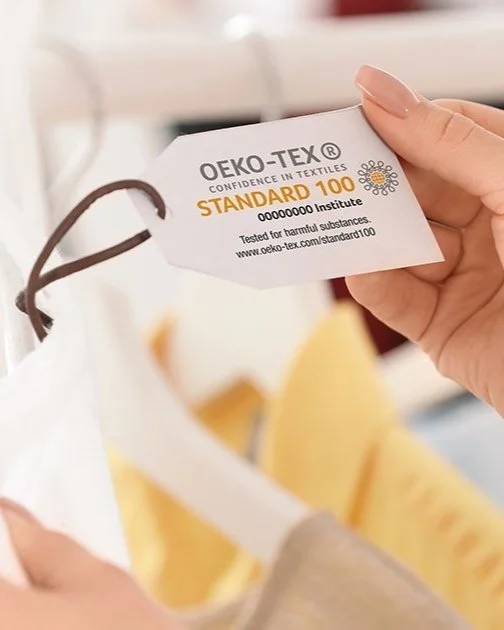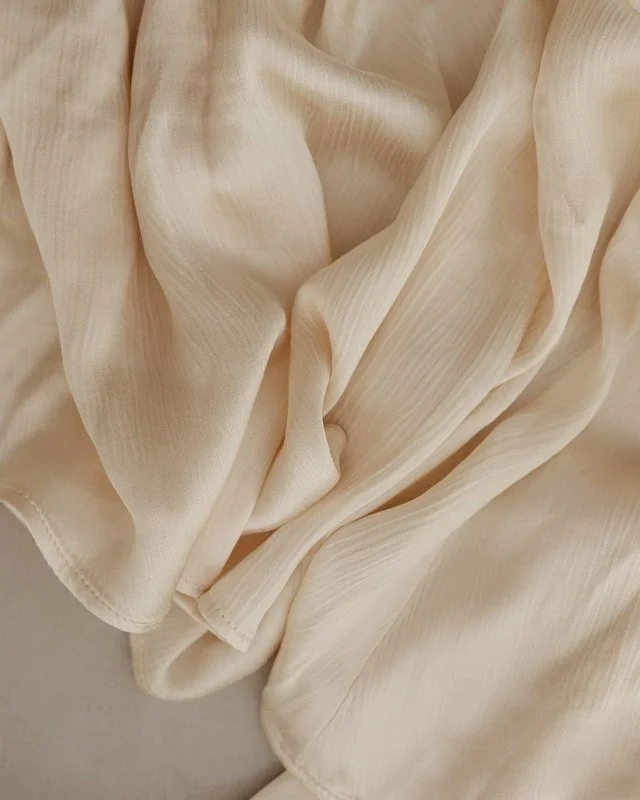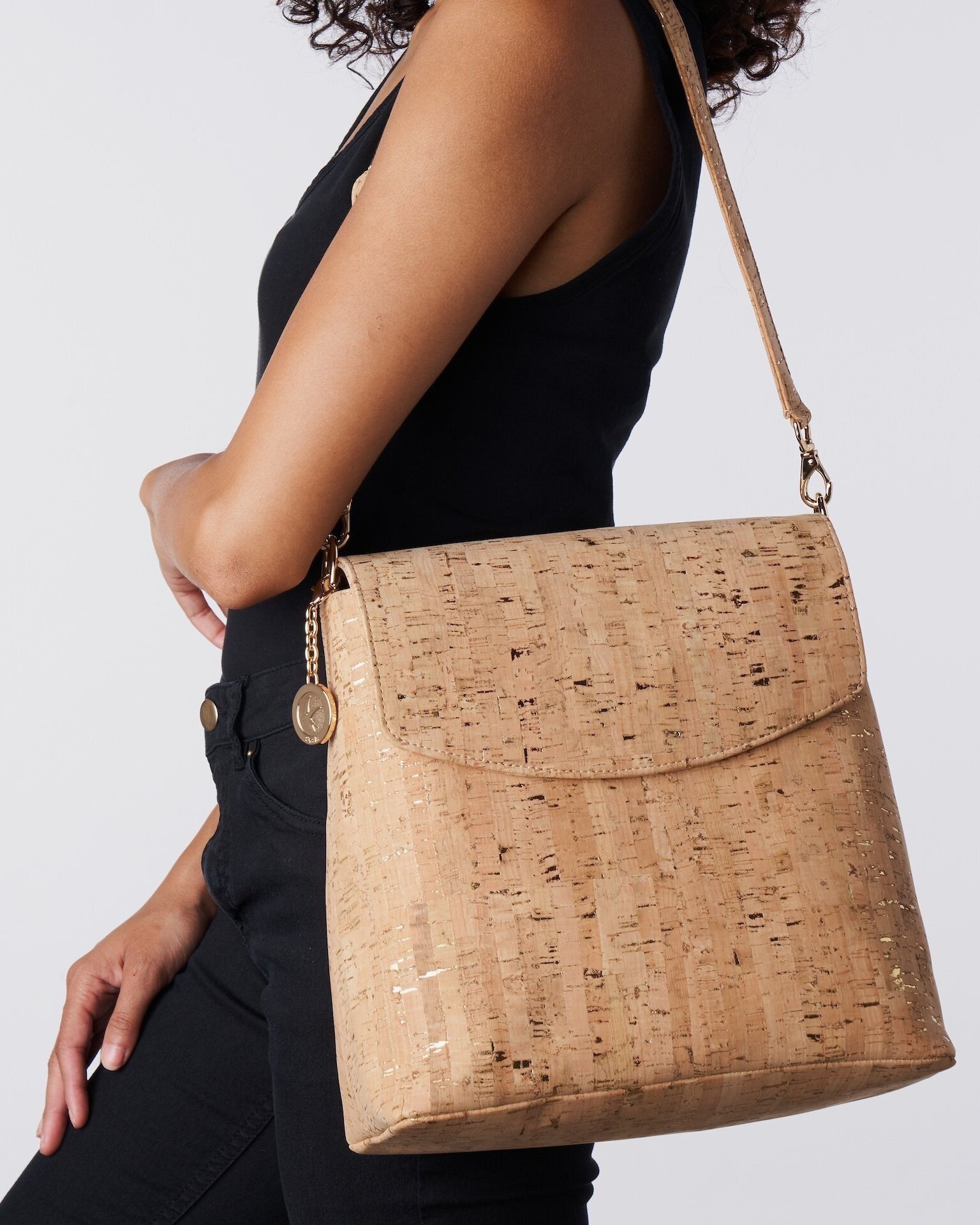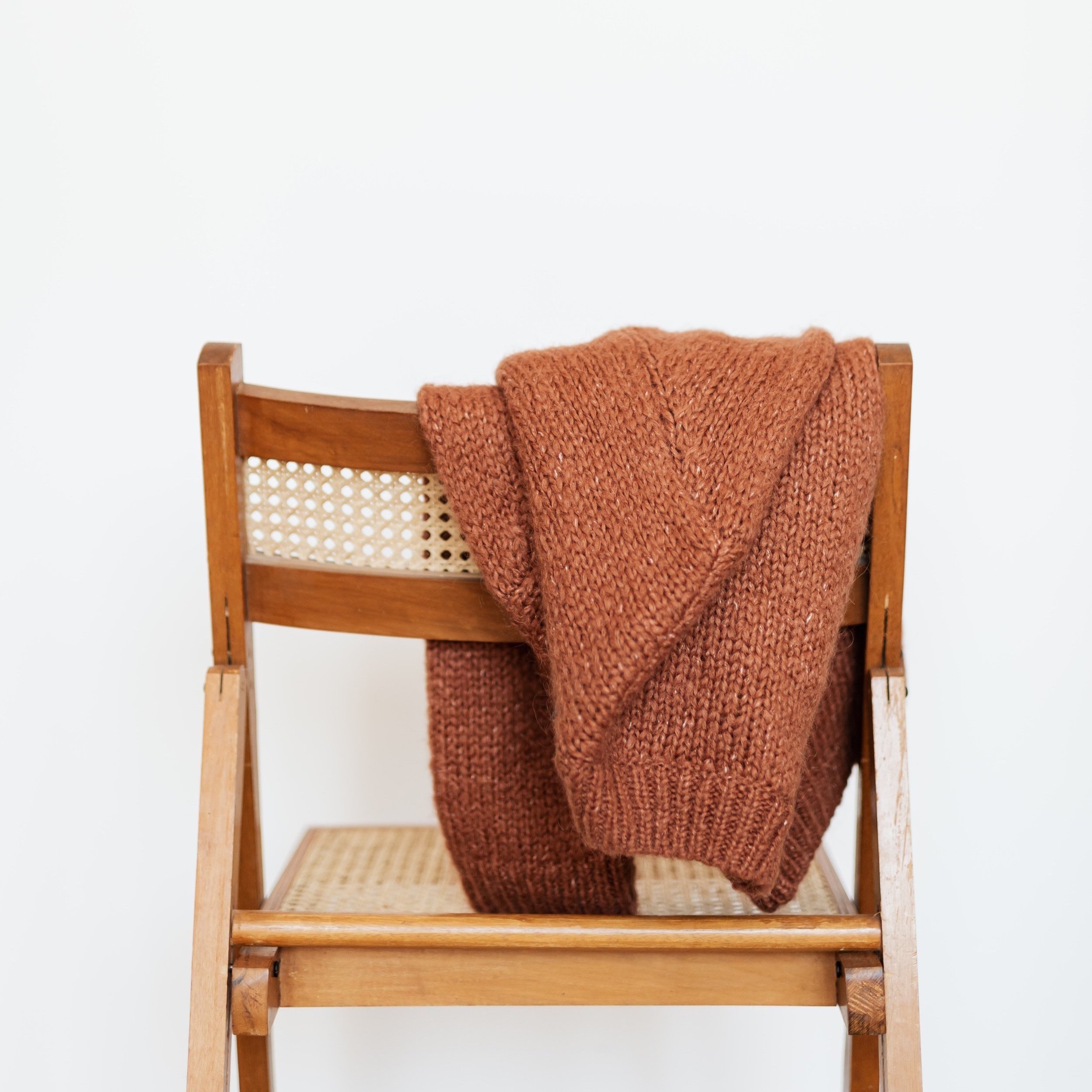What are Synthetic Fabrics? & What Makes them Not Sustainable?

Do you know which fibers your clothes are made of? Clothing labels indicate materials in ready-to-wear garments, but we often lack our ancestors' knowledge about different fibers.
In the past, not only did people make clothes at home, but fibers were also homemade. Evidence allows us to trace the use of textile looms in fiber manufacturing to thousands of years ago.
While most of us don't have to make our fabrics at home, knowing as much as possible about the materials that make up our clothes is still helpful. That can not only be useful from an everyday, practical perspective but also an environmental one.
Having more information about the characteristics of the various typologies of fabrics can guide us in choosing clothes and help us take care of our garments properly. This knowledge can aid us in making purchasing decisions that better align with our ethos and ensure our clothes' post-purchase impact is as low as possible.
If that sounds good, you are in the right place!
What are synthetic fibers?
Synthetic fibers, often called manmade or artificial fibers, are textiles made through chemical processes rather than from natural sources.
Manufacturers produce these fibers using polymers derived from petrochemicals or other raw materials. Commonly found synthetic fibers include polyester, nylon, acrylic, and Spandex. Human-made fibers originate from complex manufacturing processes, allowing engineers to design them with specific qualities in mind.
While natural fibers such as cotton or linen have a history spanning hundreds of years, synthetic fibers are a much more recent feature of our lives.Nylon emerged in 1927 when the company E. I. du Pont de Nemours & Co. developed it, and the market saw its release in 1939.
Given their consumer-friendly characteristics, these fibers have become widespread in several industries, including fashion, automotive manufacturing, and home furnishings. According to the non-profit organization Textile Exchange, in 2021, these fibers comprised 64 percent of the global fiber market, with 72 million tonnes of synthetic fibers produced that same year.

What is the production of synthetic fabrics a problem for the environment?
Despite their characteristics making them appetible to manufacturers and their consequential popularity in the market, synthetic fibers also have significant environmental drawbacks.
The use of virgin fossil-fuel-derived fibers supports the fossil fuel industry. According to the Intergovernmental organization, the International Energy Agency (IEA), synthetic textiles make up the second-largest end-use segment of global plastic demand, with the sector's estimated consumption of plastic amounting to 15 percent.
These numbers indicate that manufacturers use 1.35 percent of the total oil to produce synthetic fibers. So, while fossil-fuel-derived fibers are not conflict materials, they are products of an industry with a heavy social impact.
Synthetic fibers are not biodegradable and have been contributing to environmental pollution. Washing clothes made from fossil-fuel-derived fibers releases microplastics.
Fast fashion significantly contributes to the release of minuscule bits of plastic, especially during the first few washes. This widespread presence of fast fashion in people's closets plays a key role in this phenomenon.
About fourteen million tonnes of microplastics are on the Earth's ocean floor. Synthetic fibers have been contributing heavily to this issue. Researchers estimate that synthetic textiles contribute between sixteen to thirty-five percent of the global microplastics released into oceans.

Types of Synthetic Fabrics
Polyester
Polyester, created by mixing ethylene glycol and purified terephthalic acid, stands out as the most common type of synthetic fiber used today. Its widespread use in the fashion industry and beyond makes it the most prevalent fiber overall.
You can find polyester in the textile composition of anything from blouses and trousers to waterproof clothing and backpacks. In 2021, polyester had a market share of over 54 percent of the world's fiber production, with an annual output of about 61 million tonnes.
Polyester fibers create resilient, pest-resistant, stain-resistant, and wrinkle-resistant fabrics. However, they lack breathability, which makes them a poor choice for clothing intended for hot weather.
The production of this petroleum-based fiber is energy-intensive. A 2021 study by a team from Aachen Maastricht Institute for Biobased Materials (AMIBM) in the Netherlands has highlighted how polyester requires 125 MJ of energy per kilogram produced, resulting in the emission of twenty-seven-point-two kilograms of CO2 equivalent per kilogram of woven polyester fabric.
Nylon
Thermoplastic polymers commonly go by the name nylon. DuPont constructed the first facility to produce this fiber, and in 1940, they launched the first pairs of nylon stockings in the US, selling 800,000 pairs within the first few days in stores.
According to the Textile Exchange's 2022 Preferred Fiber Materials Market Report, this fiber took up about 5 percent of global fiber production in the examined year. Nylon plays a crucial role in the design of activewear, swimwear, stockings, and performance apparel.
Spandex
Spandex, known as elastane or Lycra outside the US, is a synthetic fiber that manufacturers create using polymers. This fiber adds stretchiness to garments, making them more comfortable and fitted.
This characteristic makes Spandex a common feature in various clothing typologies, ranging from loungewear, denim, and dresses to underwear and shapewear, which add elasticity to the fiber mix. Hence, it's used chiefly in fiber blends.
In 2021, elastane had about 1 percent market share of the global fiber market, with global elastane fiber production of one point three million tonnes in the same year.
Acrylic
This fiber, made from a polymer, is most commonly used to manufacture knitted fabrics that compose sweaters, scarves, and hats.
In 2021, acrylic's share of the global fiber market was 1.5 percent, with about 1.7 million tonnes of acrylic fibers produced worldwide.
What are synthetic blends?
As mentioned earlier, synthetic fibers can make a textile material alone, but manufacturers can mix them with other synthetic or natural fibers.
Elastene can be mixed with anything from nylon to create shapewear and stockings to cotton in dresses, blouses, and trousers. In knitwear, manufacturers can mix acrylic with other knit-friendly fibers.
These blends are created to compensate for the technical disadvantages that one or more used fibers bring and mix their advantages. Synthetic blends present post-consumer management challenges, as garments made with these textile materials can be harder to recycle.
Semi Synthetics
Semi-synthetic fibers are a third group of fibers that have characteristics found in both natural and synthetic fibers.
Also known as manmade natural fibers, these are fibers with a naturally occurring raw material created through a complex manufacturing process that heavily relies on chemicals. Popular semi-synthetic fabrics are rayon, modal and lyocell.
Rayon
Rayon, also called viscose, is an artificial cellulosic fiber and semi-synthetic. With a production volume of about 5.8 million tonnes in 2021, viscose has the largest market share of all manmade cellulosic fibers.
Rayon is used chiefly in woven fabrics, and it's derived from wood pulp. This semi-synthetic fiber presents several issues along its life cycle, from the origin of the wood pulp to the chemicals used in the fiber's production.
Recycled Synthetic Fabrics
In addition to virgin synthetic, consumers can also find their recycled equivalent on the market. For example, of the total global polyester production, 14.83 percent comprises recycled polyester, mostly made from post-consumer PET plastic bottles.
Recycled nylon, elastane, and acrylics can also be found, but their share of the overall fiber's global protection is much lower than that of recycled polyester.
The Global Recycled Standard (GRS), the Recycled Claim Standard (RCS), and SCS Recycled Content Standards are some of the most known certifications for recycled textiles.

How to take care of synthetic fibers you already own:
Clothes made of synthetic fibers have many of the same needs as those made of natural fibers. To take good care of them, we should do our best to wash them only when needed and follow the washing instructions. Avoiding the dryer and preferring air drying always saves much energy and is kinder on the fabrics.
But unlike those made of natural fiber and natural fiber blends, clothes made of synthetic fibers shed microplastics when washed. Then, these microplastics can make their way from our homes to waterways.
While tackling the issue of microplastics on a bigger scale will require action from governments and industries, we can still enact individual chances and avoid releasing microplastics from our homes into the oceans when we do our laundry. For example, we can use the GUPPYFRIEND Washing Bag when washing synthetic clothing in the washing machine and the GUPPYFRIEND Sink Filter when hand-washing them instead.
How to recycle clothing made of synthetic fabrics:
Unfortunately, clothes get recycled less than we would want them to. According to the EPA, the recycling rate for textiles in 2018 was just 14.7 percent.
If you have garments you can't sell, pass down, reuse, or upcycle and want them to get recycled; you should avoid chucking them straight into the trash can. Instead, check out the solutions offered by local programs such as the Re-Clothe NY Coalition or use services like For Days Take Back Bag.
Better alternatives to regular synthetic fabrics:
Luckily, there are some fantastic alternatives that are both sustainable and biodegradable! Organic cotton is a great choice since it's grown without harmful pesticides and uses less water than regular cotton. Hemp fabric is another eco-friendly option. It resists pests naturally and needs very little water to thrive. Linen, made from flax plants, is not only durable and breathable but also fully biodegradable. TENCEL™ (Lyocell) is created from responsibly sourced wood pulp and is produced using a closed-loop process, which is better for the environment. Choosing any of these materials is a step towards a more non-toxic and sustainable wardrobe.
About the Author
Roberta Fabbrocino is a journalist specialized in climate change and sustainability-related topics. Her articles have been published in several international eco-publications. Roberta also works as a content writer for sustainable companies.
MAKE SURE TO PIN THE PHOTO BELOW TO SAVE THIS POST FOR LATER!
WANT TO FIND SUSTAINABLE BRANDS? VISIT OUR BRAND DIRECTORY!
Our Brand Directory is home to hundreds of sustainable brands, from makeup to cleaning supplies, from underwear to shoes. We have broken everything down by category for easy shopping, along with discount codes unique to Sustainably Chic viewers.































